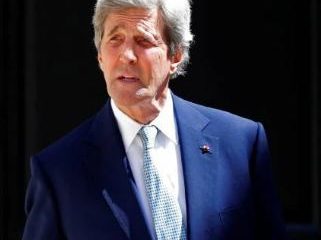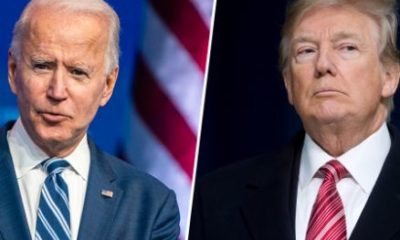World
UN climate change meet should consider role for nuclear power: IAEA head

United Nations: The upcoming UN climate change conference should consider the role of nuclear of power in producing electricity with low environmental impact, according to Yukio Amano, the Director General of the International Atomic Energy Agency (IAEA).
“Nuclear power has low environmental impact and leads to significant avoidance of greenhouse gas emissions,” he told the UN General Assembly Tuesday. “Appropriate consideration should be given to nuclear power in talks on climate change mitigation under the United Nations Framework Convention on Climate Change” starting month-end in Paris.
Regarding concerns over nuclear safety, Amano said, “The IAEA helps countries that choose to use nuclear power to do so safely, securely and sustainably.”
Unlike coal and other fossil fuels that are used for generating electricity, nuclear power does not produce greenhouse gases that are considered responsible for climate change.
“Many countries believe nuclear power can help them to address the twin challenges of ensuring reliable energy supplies while curbing greenhouse gas emissions,” Amano added.
The 441 nuclear power reactors in 30 countries produce 11 percent of the world’s electricity and 65 more are under construction mostly in Asia, he said.
To keep nuclear materials safe, Amano appealed for more countries to sigh to sign the 2005 Amendment to the Convention on Physical Protection of Nuclear Material. (CPPNM) Signatures of 13 more countries are required for it to come into force.
“Entry into force of the amendment would reduce both the likelihood of terrorists being able to detonate a dirty bomb and the risk of a terrorist attack on a nuclear,” Amano said.
The amendment would legally require countries to protect nuclear facilities and material in peaceful domestic use, storage and transport. Countries would also have to cooperate quickly to locate and recover stolen or smuggled nuclear material and mitigate the results of sabotage. Currently CPPNM only applies to international transportation of nuclear material.
India ratified the amendment in 2007, while Pakistan has not.
World
Lockdowns in China Force Urban Communities to Defy Censorship and Vent Frustration Online

Shanghai’s rich middle class is leading a wave of online dissent over the strict and prolonged lockdowns imposed in various parts of the country. Chinese internet censorship is struggling as patience is wearing thin in many urban centers, coming up with creative forms of online protests.
Social Media Posts Revealing Lockdown Tension in Shanghai
Drawn-out lockdowns are nothing new in China as authorities insist with the nation’s zero-Covid policy since the start of the pandemic. Currently over This time around, however, metropolitan areas like Shanghai are increasingly difficult to keep quiet, given that its more than 25 million residents have seen weeks of total isolation along with food shortages and many other service interruptions.
Dozens of towns and reportedly over 300 million Chinese citizens have been affected by lockdowns of different severity. As expected, urban netizens have been most outspoken over their difficulties by finding creative ways to get around state censorship and bans placed on topics, news comments and spontaneous campaigns.
Shanghai residents have been using mobile proxies and hijacking seemingly unrelated hashtags to talk about healthcare issues, delivery failures and the overall severity of their situation. The “positive energy” that the Chinese government wants to transmit during the recent prolonged series of lockdowns does not come naturally to those counting food supplies and online censors are working hard to filter words, trending topics and undesired social media sharing.
WeChat groups and message threads are under constant monitoring. Posts questioning the zero-Covid approach have been quickly deleted, including by leading Chinese health experts like Dr. Zhong Nanshan. Video footage is soon censored and protests and investigations are quickly made to disappear.
Where this has not worked, officials have exposed banners with warnings and outright threats like “watch your own mouth or face punishment”, while drones have been patrolling the city skies. Yet, if anything, this has led to further tensions and unspoken confrontation with Shanghai’s educated and affluent middle class.
Creative Online Solutions Harnessing Civic Energy
Announcements by Chinese social media that they would be publishing the IP addresses of users who “spread rumors” have not helped either. Tech industry research has shown that much of Asia’s tech-savvy population has a habit of using mobile proxies and other privacy tools, quickly finding workarounds to browse the internet freely and talk to the world about the hottest topics.
The sheer volume of forbidden posts is already a challenge for the very censorship system, experts explain. Unable to track all trending hashtags, state workers overlook topics that speak about the US, Ukraine or other popular news. Linking human rights elsewhere to their situation, Chinese online dissidents establish their informal channels and “hijack” the conversation to share personal or publicly relevant information about the Covid suppression in their town.
Sarcastic and satirical posts still dominate. Others hope to evade the censors by replacing words from famous poems or the national anthem. One thing is certain – social media, when harnessed with the right creativity, has proven its ability to mount pressure on the government in even some of the most strictly controlled tech environments like China.























